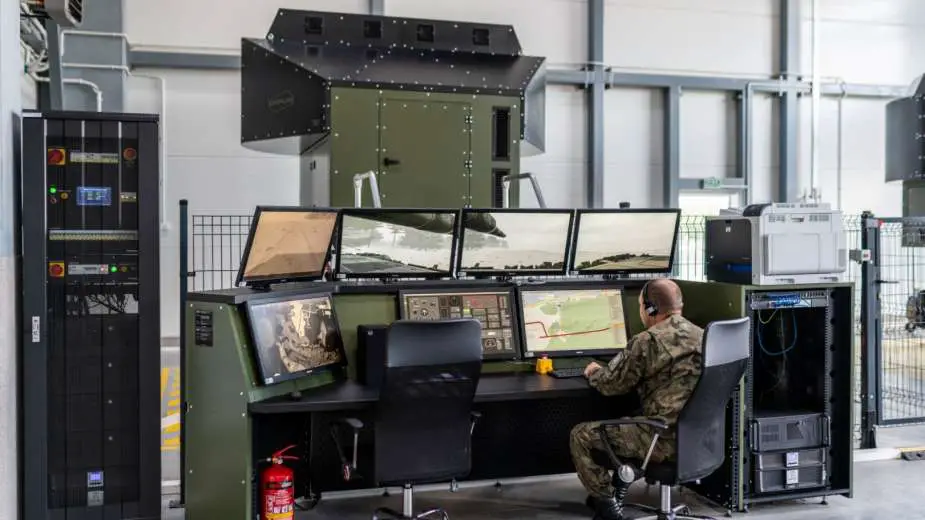Pan-Nordic Defense: How Sweden's Tanks And Finland's Troops Contribute To Regional Security

Table of Contents
Sweden's Contribution: Armored Warfare and Technological Prowess
Sweden's contribution to Pan-Nordic defense is substantial, anchored by its advanced military technology and capabilities.
Advanced Tank Technology:
Sweden possesses a modern and effective tank fleet, centered around the advanced Strv 122. This main battle tank offers significant firepower, superior protection, and impressive mobility, making it a potent force on the battlefield.
- Firepower: The Strv 122 boasts a powerful 120mm smoothbore gun capable of engaging a wide range of targets at extended ranges, utilizing advanced ammunition types for enhanced lethality.
- Protection: Its composite armor and advanced reactive armor systems provide excellent protection against modern anti-tank weapons, significantly enhancing crew survivability.
- Mobility: The Strv 122's robust engine and advanced suspension system ensure excellent mobility across diverse terrains, allowing for rapid deployment and maneuverability.
- Integration with NATO Standards: Sweden is actively working towards full integration with NATO standards, ensuring seamless interoperability with allied forces during joint operations. This involves upgrading systems and streamlining logistical processes.
Beyond Tanks: Air Defense and Naval Power:
Sweden's military strength extends beyond its armored capabilities. A robust air defense system, incorporating advanced radar technology and missile systems, plays a critical role in protecting Swedish airspace and contributing to the overall Pan-Nordic defense network. Furthermore, the Swedish Navy, with its modern frigates and submarines, is crucial for safeguarding the approaches to the Baltic Sea.
- Air Defense Systems: Systems such as the RBS 97 short-range air defense missile system provide a layered defense against air threats, integrating seamlessly with NATO's air defense architecture.
- Maritime Surveillance and Defense: The Swedish Navy contributes significantly to maritime surveillance and defense in the Baltic Sea, deterring potential threats and ensuring freedom of navigation. This includes protecting critical infrastructure and commercial shipping lanes.
- Collective Defense Strategy: These capabilities are vital in a collective Pan-Nordic defense strategy, providing a comprehensive defense against diverse threats, both air and sea-based.
Finland's Contribution: Ground Forces and Strategic Location
Finland brings unique strengths to Pan-Nordic defense, based on its highly trained military and strategic geographical position.
Highly Trained Infantry and Reserves:
Finland's military is known for its highly skilled and motivated personnel, with a strong emphasis on well-trained reservists. This provides a large and readily deployable force capable of effective responses to a range of security challenges.
- Structure and Training: The Finnish Defense Forces are renowned for their rigorous training programs, emphasizing adaptability and proficiency in various warfare scenarios.
- Asymmetric Warfare Expertise: Finland possesses extensive experience in asymmetric warfare, a critical asset in the current security environment. This expertise is valuable in dealing with unconventional threats and hybrid warfare tactics.
- Reserve Force Readiness: Finland’s robust reserve system allows for a rapid mobilization of a significant force, enhancing its overall military capacity.
Geographical Significance:
Finland's strategic location, sharing a long eastern border with Russia, is of paramount importance within the Pan-Nordic defense framework. This border region demands robust security measures, and Finland's expertise in border security and defense is invaluable.
- Eastern Border Security: Securing Finland's eastern border is vital for regional stability and acts as a key component of Pan-Nordic defense against potential threats.
- Joint Exercises and Collaboration: Finland actively participates in joint military exercises and collaborations with its Nordic neighbors and NATO allies, further strengthening regional security cooperation.
- Threat Monitoring and Deterrence: Finland plays a crucial role in monitoring and deterring potential threats along its border, providing early warning capabilities and contributing significantly to the region's overall security.
Synergies and Enhanced Regional Security
The combined military strengths of Sweden and Finland create a powerful synergy, significantly enhancing regional security and stability.
Combined Military Capabilities:
The combination of Sweden's advanced technological capabilities and Finland's highly trained ground forces creates a formidable deterrent. Sweden's naval and air defense capabilities complement Finland's land-based defenses, providing a robust and comprehensive defense posture.
- Complementary Strengths: Sweden's technological advantages combine perfectly with Finland's skilled personnel and strategic location to create a mutually reinforcing defensive posture.
- Effective Force Deployment Scenarios: Combined forces can effectively address a wide range of scenarios, from conventional warfare to asymmetric threats and hybrid warfare.
- Impact on Regional Power Dynamics: The enhanced defense capabilities shift regional power dynamics, promoting stability and deterring potential aggressors.
NATO Integration and Interoperability:
The NATO membership of both Sweden and Finland ensures seamless integration and interoperability with other allied forces, significantly strengthening collective defense within the Pan-Nordic region.
- Benefits of NATO Membership: NATO membership provides access to advanced military technologies, intelligence sharing, and joint training opportunities.
- Joint Training and Military Cooperation: Sweden and Finland actively participate in joint military exercises and operations with other NATO members, enhancing interoperability and strengthening collective defense capabilities.
- Enhanced Deterrence: NATO’s collective security guarantee provides a powerful deterrent against potential aggressors, further enhancing the security of the Baltic Sea region.
Conclusion
The integration of Sweden and Finland into the Pan-Nordic defense framework marks a significant enhancement of regional security. Sweden's advanced tank technology and naval capabilities, coupled with Finland's highly trained ground forces and strategic location, create a robust deterrent against potential threats. Their combined strength, amplified by NATO membership, ensures greater stability in the Baltic Sea region. Understanding the contributions of both countries to Pan-Nordic defense is crucial for appreciating the evolving geopolitical landscape of Northern Europe. To learn more about the specific military advancements and strategic implications of this partnership, continue researching Pan-Nordic defense and its impact on regional security.

Featured Posts
-
 The Future Of Pan Nordic Defense The Role Of Swedish Tanks And Finnish Troops
Apr 22, 2025
The Future Of Pan Nordic Defense The Role Of Swedish Tanks And Finnish Troops
Apr 22, 2025 -
 Gambling On Catastrophe Analyzing The La Wildfires Betting Market
Apr 22, 2025
Gambling On Catastrophe Analyzing The La Wildfires Betting Market
Apr 22, 2025 -
 Selling Sunset Star Exposes Price Gouging By La Landlords Post Fires
Apr 22, 2025
Selling Sunset Star Exposes Price Gouging By La Landlords Post Fires
Apr 22, 2025 -
 Pope Francis Dies At 88 A Legacy Of Faith And Change
Apr 22, 2025
Pope Francis Dies At 88 A Legacy Of Faith And Change
Apr 22, 2025 -
 Building Voice Assistants Made Easy Open Ais 2024 Announcement
Apr 22, 2025
Building Voice Assistants Made Easy Open Ais 2024 Announcement
Apr 22, 2025
